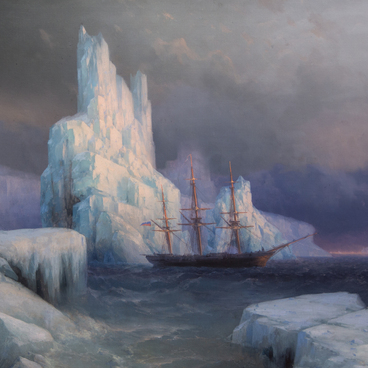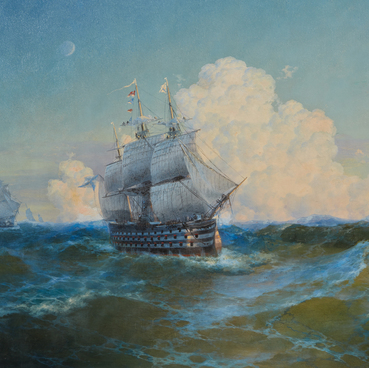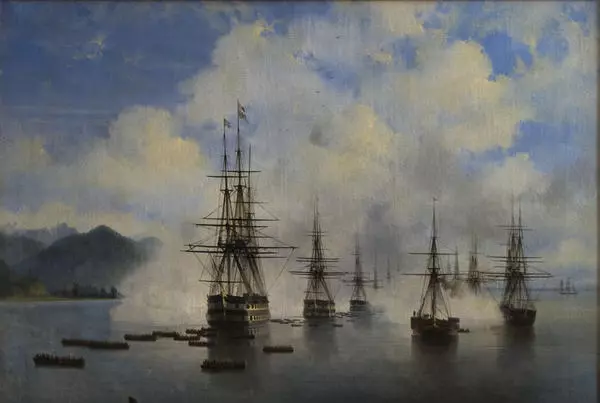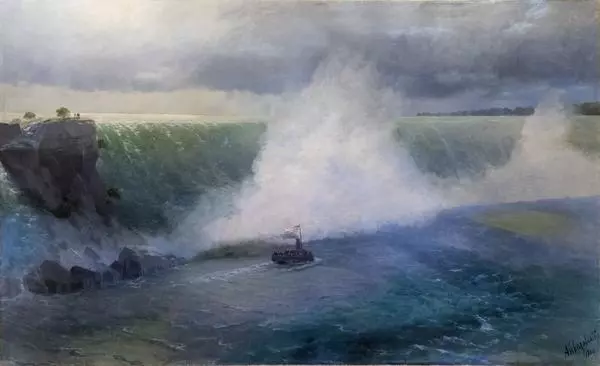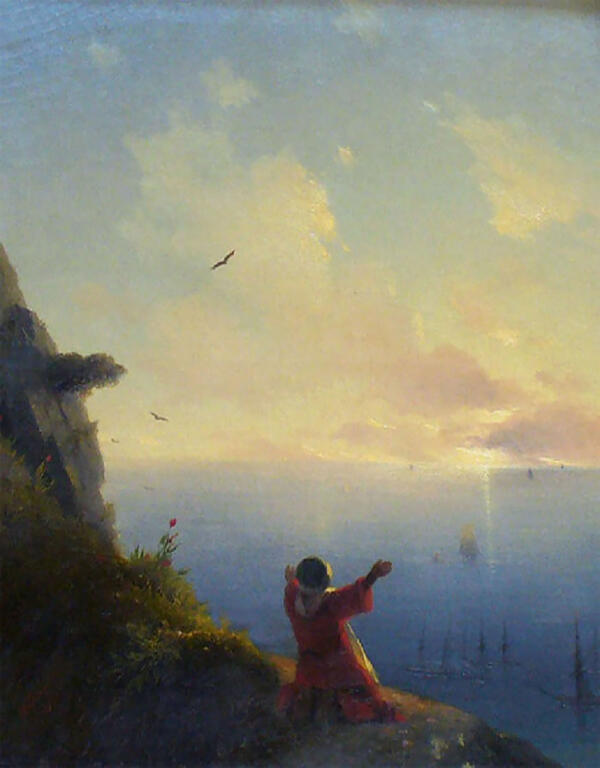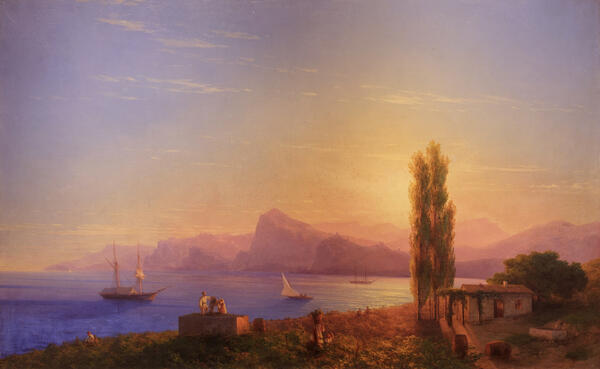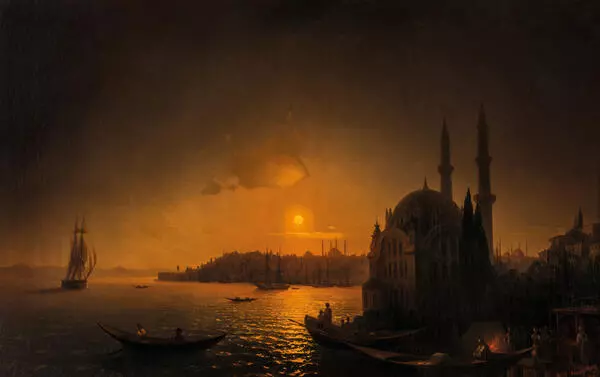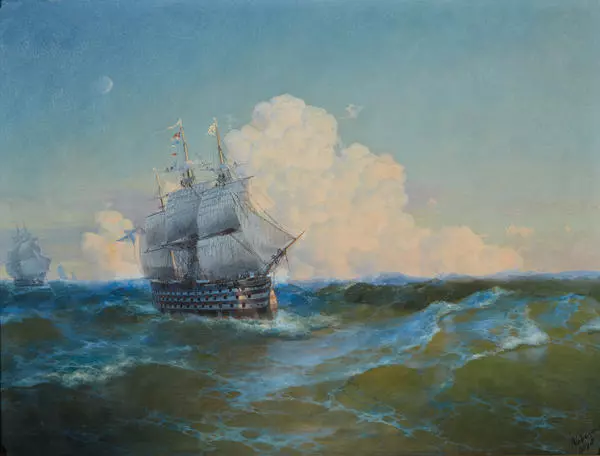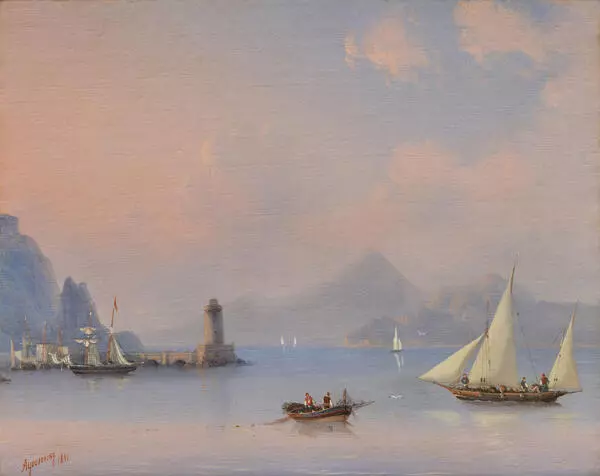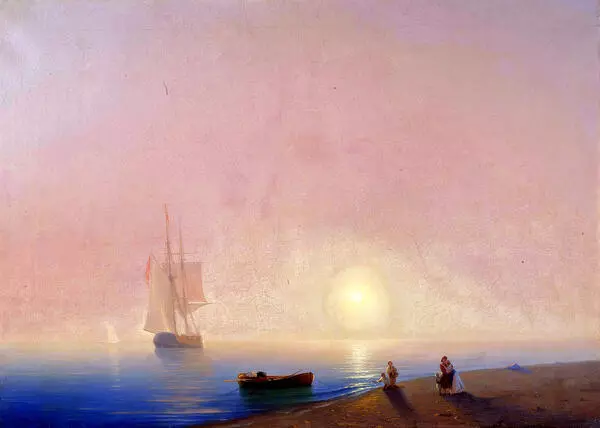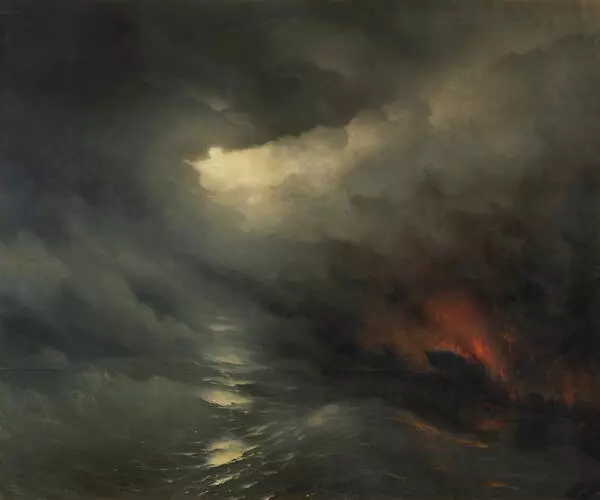In his declining years, Ivan Aivazovsky’s art was dominated by a realistic worldview. The artist abandoned his earlier infatuation with Romantism and was focused on real images of the seascape. In the 1890s, he was in the first rank of major masters of Russian painting. Virtually every year, Aivazovsky showed his new works in Russia, and in 1890, he opened an exhibition in Paris. “An exhibition of I.K. Aivazovsky”s pictures in Paris raises high the significance of Russian painting in the eyes of the French”, the French press wrote at the time.
The large 1892 tableau The Ship Maria in a Storm is typical for Aivazovsky in his mature period. Like many other of his works created in that time, it was painted by the artist on the basis of his reminiscences of his youth. Aivazovsky knew the ship Empress Maria quite well. She was named after Empress Maria Feodorovna, the wife of Paul I, and took part in the Russo-Turkish War (1828–1829) and many other important battles. The canvas is partially linked to the events of the Crimean War (1853—1856) and the Black Sea Fleet’s participation in it. Mentally, Aivazovsky frequently went back to those events. During his lifetime, the painter twice chose to depict the famous Battle of Sinope, in which the Russian Navy dealt a crashing blow to the Turkish fleet. To a large extent, the battle decided the question of the presence of Russian ships in the Black Sea.
The flagship Empress Maria captured in the 1892 painting was advancing in the lead when the Russian fleet started to approach Turkish vessels, and engaged when it was within close range. The ship was led by Admiral Nakhimov. The Battle of Sinope was one of the last major battles of the Age of Sail. Recollecting those events, Aivazovsky depicted Empress Maria in a storm that occurred in 1828, when Emperor Nicholas I was returning to Odessa on board that ship. The painter showed the battleship challenge the enraged sea, with enormous waves washing over the deck. Aivazovsky managed to convey the crew’s huge pressure. We see just one ray of the sun piercing dark clouds. The painter often used that trick to show that there is always hope even in the direst circumstances.
The large 1892 tableau The Ship Maria in a Storm is typical for Aivazovsky in his mature period. Like many other of his works created in that time, it was painted by the artist on the basis of his reminiscences of his youth. Aivazovsky knew the ship Empress Maria quite well. She was named after Empress Maria Feodorovna, the wife of Paul I, and took part in the Russo-Turkish War (1828–1829) and many other important battles. The canvas is partially linked to the events of the Crimean War (1853—1856) and the Black Sea Fleet’s participation in it. Mentally, Aivazovsky frequently went back to those events. During his lifetime, the painter twice chose to depict the famous Battle of Sinope, in which the Russian Navy dealt a crashing blow to the Turkish fleet. To a large extent, the battle decided the question of the presence of Russian ships in the Black Sea.
The flagship Empress Maria captured in the 1892 painting was advancing in the lead when the Russian fleet started to approach Turkish vessels, and engaged when it was within close range. The ship was led by Admiral Nakhimov. The Battle of Sinope was one of the last major battles of the Age of Sail. Recollecting those events, Aivazovsky depicted Empress Maria in a storm that occurred in 1828, when Emperor Nicholas I was returning to Odessa on board that ship. The painter showed the battleship challenge the enraged sea, with enormous waves washing over the deck. Aivazovsky managed to convey the crew’s huge pressure. We see just one ray of the sun piercing dark clouds. The painter often used that trick to show that there is always hope even in the direst circumstances.


